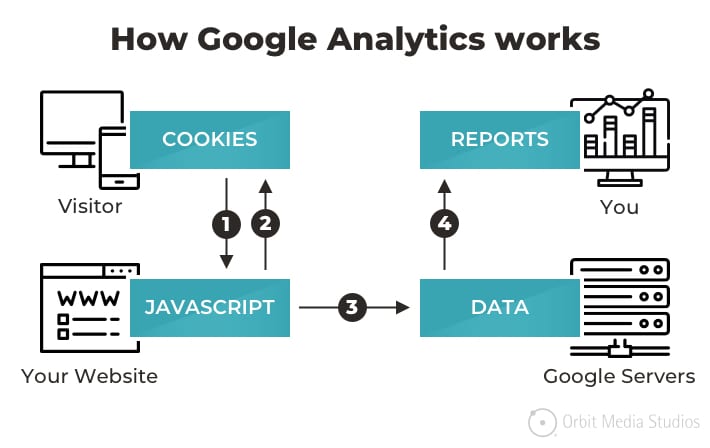Unboxing the Mystery: When Does the Google Analytics Tracking Code Send an Event Hit to Analytics?
Maximize Your Site Performance With Google Analytics Tracking Code
In the electronic landscape, recognizing individual interactions with your internet site is critical for optimization. This tactical implementation not just notifies your decisions yet likewise paves the way for a more interesting customer experience.
Understanding Google Analytics
Understanding Google Analytics is important for web site proprietors and marketers intending to optimize their on the internet visibility. This effective tool supplies critical understandings right into user behavior, enabling stakeholders to make data-driven decisions. By tracking various metrics, such as page views, bounce rates, and user demographics, Google Analytics aids recognize which elements of a site are executing well and which require renovation.
One of the key functions of Google Analytics is its ability to sector data. Customers can examine website traffic resources, individual involvement, and conversion rates across various segments, such as geographical locations or device kinds. This granularity makes it possible for marketing professionals to tailor their strategies to particular audiences, therefore enhancing the efficiency of their projects.

Establishing Tracking Code
To harness the complete capacity of Google Analytics, setting up the tracking code appropriately is a basic action. The tracking code, a snippet of JavaScript, allows Google Analytics to collect information about user interactions on your web site. To start, log in to your Google Analytics account and browse to the Admin area. Under the Home column, select "Monitoring Information" and after that "Monitoring Code." Below, you will discover your special monitoring ID, which begins with "UA-" complied with by a collection of numbers.
Next, you'll require to install this code into the HTML of your site. Preferably, position the tracking code right before the closing tag on every page you want to monitor. Consider utilizing plugins that assist in very easy assimilation. if you're using a content management system (CMS) like WordPress.
After executing the code, it's vital to validate its functionality. Utilize the "Real-Time" records in Google Analytics to validate that information is being accumulated as anticipated. By ensuring proper setup, you create a solid foundation for effective data analysis and strategic decision-making to enhance your website's performance.
Trick Metrics to Display
Routinely keeping an eye on crucial metrics in Google Analytics is necessary for examining your web site's performance and individual engagement. Among the basic metrics to track are web page sights, which offer insight into just how usually customers check out different pages on your website. In addition, special visitors help you recognize the reach of your material by suggesting how many distinctive individuals are engaging with your website over a provided period.
Bounce price is one more important statistics, exposing the percentage of site visitors who leave your website after checking out just one page. A high bounce price may indicate issues with content importance or user experience. check this Conversely, session period indicates for how long site visitors remain on your website, assisting you gauge web content efficiency and user passion.
Conversion rates are essential for determining the success of your web site in attaining certain goals, such as type submissions or product acquisitions (when does the google analytics tracking code send an event hit to analytics?). Keeping an eye on traffic sources is additionally essential, as it try this site aids identify which networks drive the most traffic and conversions, enabling for even more targeted marketing approaches
Analyzing Visitor Actions

Furthermore, tracking customer pathways via the site aids expose usual navigation patterns. This details is vital in determining whether individuals can easily discover the web content they seek or if they run into obstacles that result in stress. Determining high leave pages can highlight locations that might need redesign or more interesting content to maintain site visitors.
Additionally, segmenting individuals based upon demographics, interests, and habits gives a deeper understanding of the target audience. This division makes it possible for companies to tailor web content and marketing techniques better, enhancing the chance of conversions. Inevitably, analyzing visitor habits not just educates website enhancements however likewise cultivates an extra user-centric approach, resulting in enhanced fulfillment and commitment with time.
Implementing Data-Driven Changes
Executing data-driven modifications is necessary for boosting internet site efficiency and attaining organization objectives. By leveraging understandings collected from Google Analytics, organizations can recognize areas for improvement and make educated choices to optimize individual experience.
First, analyze essential efficiency signs (KPIs) such as bounce rates, session duration, and conversion prices to identify details concerns influencing customer interaction - when does the google analytics tracking code send an event hit to analytics?. For circumstances, a high bounce rate on a landing page might show that the material is not resonating with visitors or that the web page takes also lengthy to load

Verdict
To conclude, the implementation of Google Analytics tracking code is necessary for maximizing website performance. By precisely keeping an eye on customer actions and key metrics, important insights can be gotten, promoting data-driven decision-making - when does the google analytics tracking code send an event hit to analytics?. This procedure not just enhances user experience but also aligns with wider company goals. Constant evaluation and subsequent modifications based on gathered data will result in sustained improvements, ultimately contributing to the overall performance and success of the website.
By tracking various metrics, such as web page sights, bounce rates, and user demographics, Google Analytics aids recognize which elements of a site are performing well and which call for renovation.
Individuals can analyze website traffic resources, user engagement, and conversion prices across various sections, such as geographic areas or gadget types. The monitoring code, a snippet see of JavaScript, makes it possible for Google Analytics to gather data concerning individual interactions on your web site.On a regular basis keeping an eye on key metrics in Google Analytics is crucial for examining your website's efficiency and customer interaction. By leveraging Google Analytics, website proprietors can gain useful insights right into how individuals interact with their site.